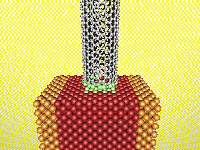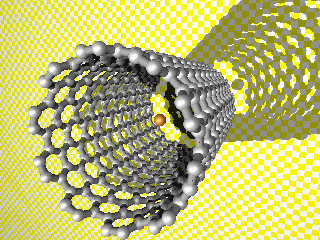_Part of the process (discharging) for electric nanotubes
Electrically conductive graphene nanoribbons and mutation of multi-layered and single-layered nanotubes
Researcher and author: Dr. ( Afshin Rashid)

Note: Electrically conductive graphene nano-ribbons in the structure of multi-layer and single-layer nanotubes show signs of ballistic transport . Although the electrical conductivity of graphene obtained using electrochemical methods is not as good as perfect graphene, it is still a suitable option for the production of electrically conductive graphene nanoribbons .
SWCNTs inside the carbon nanotubes are mixed with graphene conductive fillers to obtain conductive materials that are light in weight and have a minimum electrical resistance of less than 105 m/Ω. These graphene nanoribbons show a non-linear increase in the amount of electrical conductivity, which shows that this increase is a function of the amount of the reinforcing phase. At a certain value of the nanoparticle, which is known as the permeability threshold, the nanoparticle has the ability to form a network structure. This causes a sudden increase in electrical conductivity of graphene nanoribbons inside CNTs carbon nanotubes.

The inherent conductivity and length-to-width ratio of carbon-based filler nanoparticles make them a suitable choice to reach this permeability threshold in small amounts of the filler phase of graphene nanoribbons inside CNTs nanotubes. Perfect graphene sheets show signs of ballistic transport . Although the electrical conductivity of graphene obtained by electrochemical methods is not as good as that of perfect graphene, it is still a suitable option for the production of electrically conductive graphene nanoribbons .

The movement of nanoelectrons in electrochemically modified graphene nanoribbons is the result of carbon nanotubes, CNTs and graphene nanoribbons . Nano-electron conductivity in a sample of graphene nano-ribbons has been measured around 200 ± 2400 m/S . CNTs carbon nanotubes in combination with graphene nanoribbons in low percentages form the electrical permeability threshold. Also, graphene and modified graphene in the same amounts or even less than carbon nanotubes have the ability to form a conductive network and nanoelectron transfer , the acoustic threshold changes in a wide range of composition percentage of graphene nanoribbons .
Researcher and author: Dr. ( Afshin Rashid)
Specialized doctorate in nano-microelectronics


